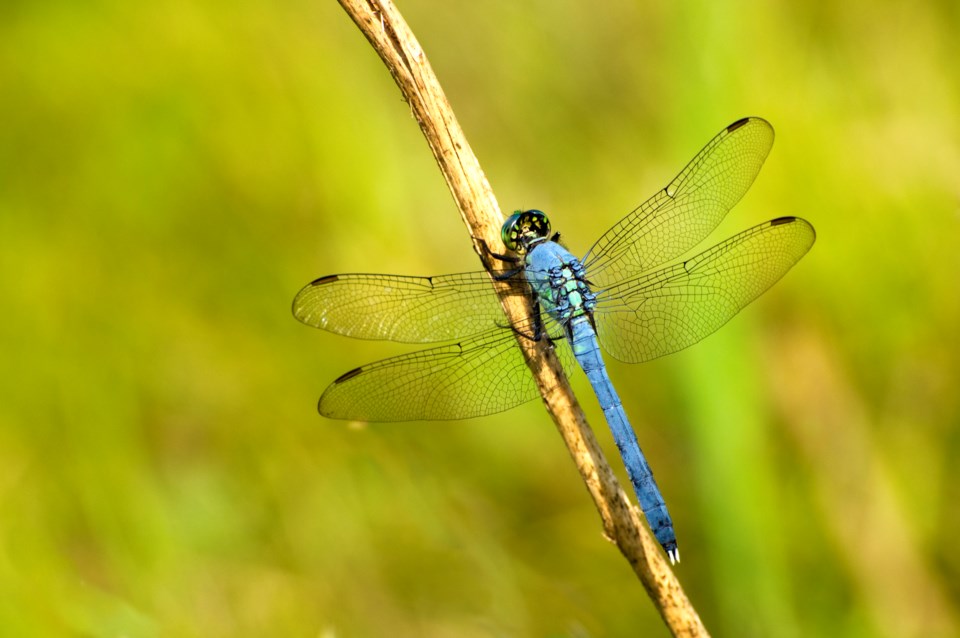The Longmont Leader accepts contributions, photos, letters to the editor, or LTEs, and op-eds for publication from community members, business leaders and public officials on local topics. Publication will be at the discretion of the editor and published opinions do not represent the views of the Longmont Leader or its staff. To submit a contribution, email [email protected].
As children, we may associate them with fairies and summer days lounging by a lake, or perhaps we know them simply as delicate, beautiful, winged creatures we can find flitting around water, but dragonflies are so much more than meets the eye. They are deeply interesting animals that play an important role in our ecosystems, as well as dazzling onlookers and nature enthusiasts alike.
Belonging to the order Odonata, dragonflies have been on earth for more than 300 million years, making them some of the oldest flying insects. Known for their large multifaceted eyes, slender bodies, and transparent wings, these animals have evolved into over 5,000 different species worldwide.
There are over 450 recorded species of dragonflies and damselflies in North America. Colorado's diverse landscapes offer a range of habitats that cater to various dragonfly species. From high-altitude alpine lakes to marshy wetlands and slow-moving streams, these insects thrive in areas with freshwater sources. There are over 100 species of dragonflies and damselflies known in our state.
Dragonflies play a crucial role in maintaining the delicate balance of our ecosystem. As both nymphs and adults, they are voracious predators, primarily feeding on mosquitoes, flies, and other small insects. By keeping populations of potential pests in check, dragonflies contribute to the natural control of disease-carrying mosquitoes, making them invaluable allies in the battle against insect-borne illnesses, as well as controlling the populations of these insects.
Dragonflies are what is known as a keystone species. This means that they are an extremely important piece in keeping their ecosystem together, removing them would have an extremely detrimental impact, much like the keystone in a building. As dragonflies are a primary predator of numerous smaller insects, without them these insect populations could dramatically increase, having a detrimental effect on plants and animals that are food sources for them.
In addition to controlling other insect populations, dragonflies are an indicator species of water quality and vegetation change as larvae. This means that they can signal changes in their ecosystem. If the dragonfly population in an area is robust and healthy, that means that the water quality is likely fairly good, but if the water quality decreases, dragonflies will be one of the first animals to be impacted.
Unfortunately, dragonflies remain poorly studied despite their outsized impact. The International Union for Conservation of Nature (IUCN) global assessment of dragonflies revealed that damage to wetlands and rivers is putting one in six dragonfly species at risk of extinction. We need to protect these animals and help them continue to help us and our environment.
People can aid dragonflies by participating in community science initiatives and recording sightings of them, which helps give scientists more information about the species that live in Colorado and where to find them.



